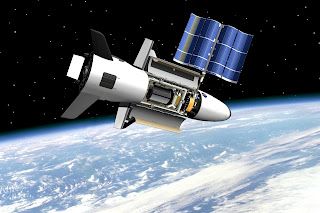Future Technology- Space Drones from NASA.
NASA has challenged their designers to develop a conventional drone to work inside a space station, navigating with no ‘up’ or ‘down’. In aviation and in space, a drone refers to an unpiloted aircraft or spacecraft. Another term for it is an “unmanned aerial vehicle” or UAV.
A team of NASA engineers and their designers want to put drones on Mars. These flying robotic sentinels could reach more of the Martian surface, and possibly solar system moons or the dark, sunless craters on asteroids.
While not technically called a drone, it could be represented that several of the spacecraft that visit the International Space Station are unmanned aerial vehicles as they carry only cargo on board, with no pilot. There are several of these vehicles, including Russia’s Progress spacecraft, the (now-retired) European Space Agency Automated Transfer Vehicles, SpaceX’s Dragon and Orbital Science’s Cygnus.
From time to time, a space agency will test vehicles in space before putting people on it, which happened in the Mercury, Gemini and Apollo programs. (The space shuttle was never tested without pilots on board.) In 2014, NASA sent its Orion spacecraft high into orbit in an unpiloted test.
ArachnoBeeA, would use cameras and tiny beacons to manoeuvre its way around. How popular drones would be in such a confined space is a different question by the way. The ArachnoBeeA project was part of a robotics-related challenge entitled “ZERO GEE Bee – Your Friendly Neighborhood Drone”, whose main task was to build a quad-copter-like drone that would be able to transport objects in any kind of spacecraft.





Comments
Post a Comment